
The New Zealand Wars took place from 1845 to 1872 between the New Zealand colonial government and allied Māori on one side, and Māori and Māori-allied settlers on the other. They were previously commonly referred to as the Land Wars or the Māori Wars, while Māori language names for the conflicts included Ngā pakanga o Aotearoa and Te riri Pākehā. Historian James Belich popularised the name "New Zealand Wars" in the 1980s, although according to Vincent O'Malley, the term was first used by historian James Cowan in the 1920s.

Tainui is a tribal waka confederation of New Zealand Māori iwi. The Tainui confederation comprises four principal related Māori iwi of the central North Island of New Zealand: Hauraki, Ngāti Maniapoto, Ngāti Raukawa and Waikato. There are other Tainui iwi whose tribal areas lay outside the traditional Tainui boundaries – Ngāi Tai in the Auckland area, Ngāti Raukawa ki Te Tonga and Ngāti Toa in the Horowhenua, Kāpiti region, and Ngāti Rārua and Ngāti Koata in the northern South Island.
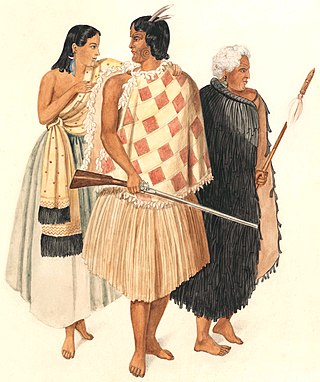
Te Ruki Kawiti was a prominent Māori rangatira (chief). He and Hōne Heke successfully fought the British in the Flagstaff War in 1845–46.

Hōne Wiremu Heke Pōkai, born Heke Pōkai and later often referred to as Hōne Heke, was a highly influential Māori rangatira (chief) of the Ngāpuhi iwi (tribe) and a war leader in northern New Zealand; he was affiliated with the Ngati Rahiri, Ngai Tawake, Ngati Tautahi, Te Matarahurahu and Te Uri-o-Hua hapū (subtribes) of Ngāpuhi. Hōne Heke fought with Hongi Hika, an earlier war leader of the Ngāpuhi, in the Musket Wars. Hōne Heke is considered the principal instigator of the Flagstaff War in 1845–46.
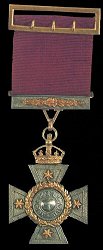
The New Zealand Cross was introduced in 1869 during the New Zealand Wars in New Zealand. The wars were fought between natives of New Zealand, the Māori, and forces raised by European settlers known as Pākehā assisted by British troops.
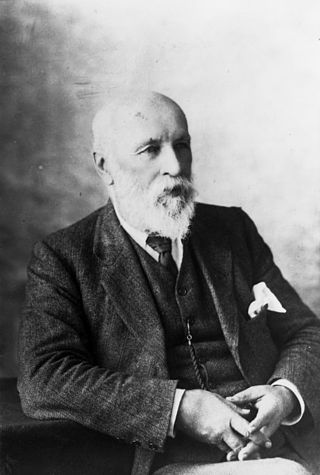
Stephenson Percy Smith was a New Zealand ethnologist and surveyor. He founded The Polynesian Society.

Henry Williams was the leader of the Church Missionary Society (CMS) mission in New Zealand in the first half of the 19th century.

Te Waimate Mission was the fourth mission station established in New Zealand and the first settlement inland from the Bay of Islands. The members of the Church Missionary Society (CMS) appointed to establish Te (the) Waimate Mission at Waimate North were the Rev. William Yate and lay members Richard Davis, George Clarke and James Hamlin.

Octavius Hadfield was Archdeacon of Kāpiti, Bishop of Wellington from 1870 to 1893 and Primate of New Zealand from 1890 to 1893. He was a member of the Church Missionary Society (CMS) for thirty years. He was recognised as an authority on Māori customs and language. His views on Māori rights, expressed in several books strongly criticised the actions of the New Zealand Government. Hadfield married Catherine (Kate) Williams a daughter of the Rev. Henry Williams and Marianne Williams.

Rewi Manga Maniapoto (1807–1894) was a Ngāti Maniapoto chief who led Kīngitanga forces during the New Zealand government Invasion of Waikato during the New Zealand Wars.
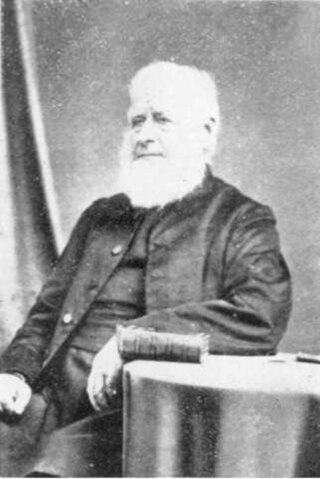
William Williams was consecrated as the first Anglican Bishop of Waiapu, New Zealand, on 3 April 1859 by the General Synod at Wellington. His son, Leonard Williams became the third Bishop of Waiapu and his grandson, Herbert Williams, the sixth. His brother, the Rev. Henry Williams, led the Church Missionary Society (CMS) mission in New Zealand. William Williams led the CMS missionaries in translating the Bible into Māori and published an early dictionary and grammar of the Māori language.
Gilbert Mair was a sailor and a merchant trader who visited New Zealand for the first time when he was twenty, and lived there from 1824 till his death. He married Elizabeth Gilbert Puckey – who had the first piano brought to New Zealand in 1827. They had twelve children. Among them were "famous New Zealanders" like Captain Gilbert Mair and Major William Gilbert Mair. Mair is a direct-line ancestor of Māori politician and activist Ken Mair.
HMS Hazard was an 18-gun Favorite-class sloop of the Royal Navy. She was one of four Favorite-class ship sloops, which were a ship-rigged and lengthened version of the 1796 Cruizer-class brig-sloop. All four ships of the class were ordered on 10 June 1823. She was launched in 1837 from Portsmouth Dockyard.
The 1908 New Zealand rugby league season was the first season that rugby league had been played in New Zealand. Auckland played Wellington in a two match series that was won by Auckland 1-0. Otago and Southland also participated in a two match series which was drawn 1-all. Auckland and Taranaki then drew a two match series.
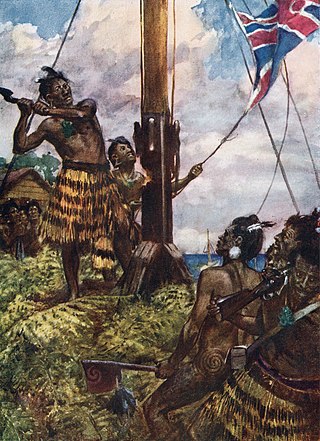
The Battle of Kororāreka, or the Burning of Kororāreka, on 11 March 1845, was an engagement of the Flagstaff War in New Zealand. Following the establishment of British control of the islands, war broke out with a small group of the native population which resulted in the fall of the town of Kororāreka, present day Russell, to Māori warriors.
Nōpera Panakareao was a New Zealand tribal leader, evangelist and assessor. Of Māori descent, he identified with the Te Rarawa iwi.
The New Zealand Church Missionary Society (NZCMS) is a mission society working within the Anglican Communion and Protestant, Evangelical Anglicanism. The parent organisation was founded in England in 1799. The Church Missionary Society (CMS) sent missionaries to settle in New Zealand. The Rev. Samuel Marsden, the Society's Agent and the Senior Chaplain to the New South Wales government, officiated at its first service on Christmas Day in 1814, at Oihi Bay in the Bay of Islands, New Zealand.

The Albert Barracks was a major British military installation that overlooked Auckland, New Zealand, from the mid-1840s to 1870, during the city's early colonial period. The perimeter wall was built between 1846 and the early 1850s, in the area now bounded by Kitchener Street, Waterloo Quadrant, Symonds Street, and Wellesley Street East, according to Colonel Thomas Rawlings Mould's 1860 map of Defensible Works round Auckland. The site is now mostly occupied by Albert Park and the University of Auckland's City Campus, and Princes Street runs through the centre of it. All that remains of the barracks structures is part of the perimeter wall, which is on the university campus.












